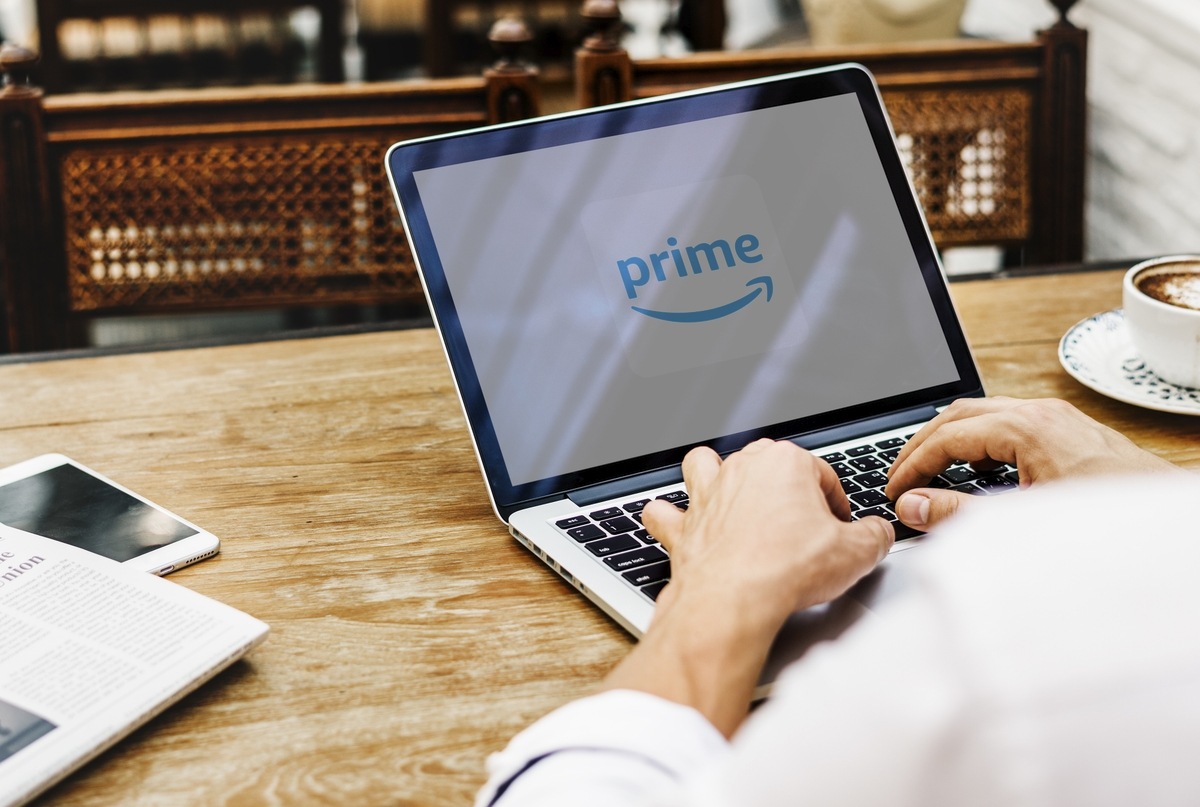What is The Amazon Effect – a Brief Guide
Written by
Kinga EdwardsPublished on

Have you ever wondered how convenient it is to shop online? Or have you noticed that you are annoyed by queues in stationary stores and have to wait a long time for service? Well, you are probably experiencing the Amazon Effect.
The name doesn’t say anything to you? Don’t worry – in this article, we’ll explain what the effect is, who it affects, its impact on e-commerce and how retailers can take advantage of it.
Here we go!
What is The Amazon Effect?
In terms of revenue, Amazon is the third largest public company in the world, behind Walmart and State Grid of China. The Coronavirus pandemic contributed to the company’s 37.6% growth in revenue in 2020.
Source: https://www.businessofapps.com/data/amazon-statistics/
Amazon set the trend for online shopping, making people feel comfortable with e-commerce and enabling them to make purchases from home or anywhere with an internet connection, which these days mean just about everywhere. But people expect more, and now they want the same experience, online as well as in stores.
In retail, and especially e-commerce, the “Amazon effect” describes a massive change in customer expectations caused by Amazon’s strong focus on fulfilling customers’ needs. What’s more, this name itself recognizes Amazon’s dominance in online sales, which has driven much of the change in the industry.
Nowadays, people expect a seamless and instant buyer journey, no matter what the industry or product is. And the Amazon effect promises consumers a nearly frictionless shopping experience.
The primary manifestation of the Amazon effect is the growing trend of consumers shopping online. Therefore, this trend has an influence, especially on underperforming brick-and-mortar retailers, who end up going bankrupt or closing part of their stores. As a result, we can say the Amazon effect is also the impact of the digital market on traditional business models in terms of consumer expectations and new competitive landscapes.
Why did the Amazon Effect Become so Powerful?
As a result of its strong influence on online customers, the Amazon effect has become so powerful. Its:
- fast services,
- intuitive technology,
- high assortment selection,
- and attractive prices
are very competitive. People have grown accustomed to such conveniences.
Therefore, if you give them an old website with a barely working shopping cart and no option to pay online, don’t be surprised if customers walk away from you. It’s not rare that when Amazon comes into the picture, stationary businesses and small e-commerce companies fail soon after. That’s why they are unable to compete against Amazon’s extensive offerings, reasonable prices, and fast shipping will die.
Most customers negatively perceive the unreasonably high prices in stationary stores. Amazon, on the other hand, has many attractive offers and often adds various promotions.
In addition, shopping in physical stores has become as time-consuming as ever. People are busy and don’t always have time to browse stationary stores. In contrast, in your leisure time, you can take your phone, and open an online store that is always available, has no queues, and allows you to shop even at night. Convenient, right?
Another factor that boosts the Amazon effect is its fast and adequate customer service. Customers demand a focus on their problems, not on how much your store wants to sell.
So Amazon has started to take care of its customers, and they have repaid the trust.
Amazon Effect impact on E-commerce
So, as you can see, the Amazon effect increased customer demands, making it a pretty big challenge to e-commerce. Nevertheless, Amazon gave customers what they wanted, even if they didn’t realize their needs. Shipments became faster, returns became hassle-free, and the assortment was wide and derived from different countries – there was simply something for everyone.
Thus, stationary stores, as well as online ones, have to become better and run services of similar quality to Amazon to stay relevant.
On the other hand, the Amazon effect is an excellent opportunity for e-commerce to improve its business and become more competitive. But how?
By using the Amazon effect to their advantage!
Make use of the fact that many people prefer to shop online rather than in the real world. For example, they buy clothes this way because it is easier and faster, and they are confident that the service will be efficient. In this way, they contribute to the Amazon effect.
The COVID-19 pandemic has only further increased the growing interest in online shopping. In addition, many malls and retail stores had to close due to state-imposed restrictions, so the gap between online and offline shopping was even more noticeable.

How can Retailers Take Advantage of the Amazon Effect?
There are a lot of ideas about how stationary stores can take advantage of the Amazon Effect, and we’ve already hinted a bit at what retailers should focus on, but now let’s get into the details.
#1 Improve Services
Maybe in the past, you didn’t have to fight for the customer and take care of their needs, but now the customer has the right to expect an approach oriented to them, regardless of whether they succeed in completing the transaction or not. But not every brand takes this strategy. Some companies are still focused on increasing the number of buyers without caring too much about them or worrying about their actual requirements. Let alone creating the perfect shopping experience.
So pay attention to what quality your services are or how far behind you are with providing the best solutions. An intuitive website, overseas delivery, highlighted listings from the most reliable sellers or blocking unreliable ones, a convenient solution for each side of buyers and sellers – these are no strangers to Amazon. So, how about your services?
#2 Streamline Shipping
Timely, hassle-free, and fast shipments deserve special attention.
Amazon is at the forefront of innovation in logistics operations, with a range of options designed to get products from the warehouse to your home as quickly as possible. To make delivery as fast and easy as possible for consumers, Amazon has introduced several shipping options, including free shipping for Amazon Prime subscribers, which are over 200 million. This was a great move, as customers have different needs, and such outreach only makes e-commerce more of an integral part of many people’s lives.
But despite all this, Amazon has not stopped developing its delivery options. Amazon Lockers option, an elf-service package delivery service of parcel lockers, only confirms this. If you want to compete with this level of shipping and delivery too, you have to go out of your way to meet customers and put solutions that they will love, under their noses.
#3 Optimize Stores
Above all, consumers expect seamless experiences. They want to buy, pay, and return products on one single platform. It would be best if it offered a variety of offers and different deals. Therefore, the popularity of such advanced platforms is growing, while interest in those that are not very intuitive is declining.
How does this apply to your store? If you’re running an online business, then also try to provide all the necessary services on one platform so that it’s as easy as possible for the customer to… basically does everything on your site, not just finalize a purchase. Take care of the intuitiveness of your online store and its design.
If, on the other hand, you run a stationary business, maybe it’s high time to introduce online ordering? In any case, try to customize your store. Don’t forget people still buy offline. So, make it easier for customers to navigate through your physical store so that buyers don’t have to search through all the shelves before they find what they want. Otherwise, they’ll sooner prefer to order the item they’re looking for from a competitor than come back to you.
#4 Leverage Mobile Technology in Store
The smartphone retail eCommerce market is expected to reach $432 billion in 2022, compared to $148 billion in 2018. So, there is no doubt that mobile devices are driving mobile commerce’s rapid growth. In other words, mobile technologies are the future and can have a positive impact on your store as well.
When customers enter a store, they usually already know what they want. Therefore, the opportunity for retailers lies in providing a mobile experience that makes acquiring their products as simple as possible. Furthermore, mobile users are increasing every year, so customizing stores for mobile is no longer an option, but a necessity.
Particularly, this issue should concern e-commerce. With only a smartphone, users want to be able to purchase at any time. So, when they enter your stationary store, you can use your mobile app or website to increase their engagement. For example, they will be able to try on a T-shirt in the store and buy it using their phone. You can also run a digital loyalty program, offer customers 24-hour live support, cash-back offers, free express shipping, booking in-store visits, etc. In this way, you’ll combine your online and offline store, and accommodate shoppers who are becoming more independent.
#5 Track Customer Behavior
Another important aspect of improving your store is measuring customer behavior. If you find out how customers behave, you will be able to level out their pain points, streamline your services and improve customer experience. Using this type of technology will also allow you to optimize costs and improve customer support.
Digital tools for measuring behavior are now increasingly effective in offline stores as well. And that means you don’t have to watch your customers in the store but trust the right tools.
Bricks-and-mortar stores use tracking methods, but they are not as well-known. Meanwhile, they are used as conveniently as in online stores. For example, many brick-and-mortar stores make use of smartphones to track customer behavior and do what computers do online: using chips and other devices, smartphones track customers’ movements in the store, their trajectories, and whether they linger in front of particular displays or products. Computer tracking is similar to what is done on a smartphone in stationary store.
Is The Amazon Effect Here to Stay?
Since its founding, Amazon has permanently redefined retail shopping. So this is not a temporary trend. The Amazon effect has settled in and has no intention of going away. What’s more, it has become the standard.
There are two possible situations that could arise: either stores with an uncertain future will go bankrupt and withdraw from the market altogether because they will not bear the burden of the Amazon Effect, or they will use it to their advantage and become competitive players in the market.
In the best position will be those physical stores with an online shop that run excellent services and are able to offer something that online stores cannot. That’s where the opportunity lies, but it will only be available to those retailers who use technology to take full advantage of it.
Over to You
The Amazon effect is nothing new, but many people and stationary stores are still unaware of its presence. And that’s a pity because many brands are in great danger of failing to adapt to current customer demands. Especially brick-and-mortar stores must either adapt to survive in this tough competition or simply surrender in the face of the Amazon effect.
With this article, we hope you already know what this effect looks like and will be able to improve your operations, both in e-commerce and as a stationary retailer.


